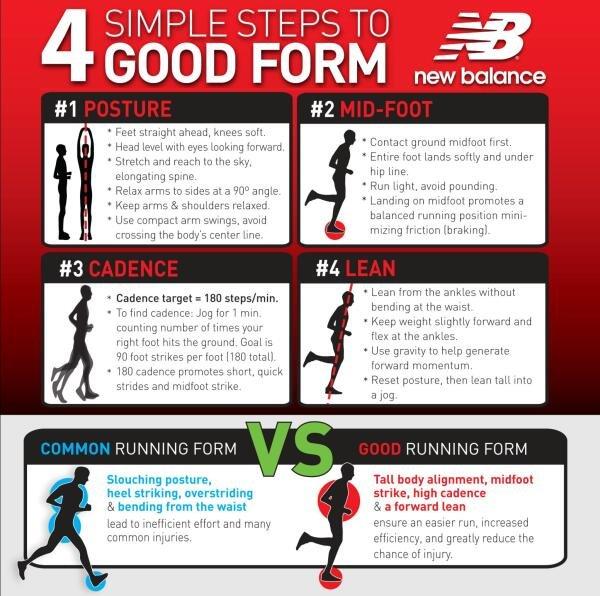Long-distance running is often celebrated as a journey of endurance, resilience, and personal discovery. With every mile, runners push the boundaries of their physical and mental limits, seeking the elusive runner’s high. Yet, alongside the rewards of this sport lies a path fraught with potential pitfalls: the common injuries that can sideline even the most dedicated athletes. Whether you’re a seasoned marathoner or a novice taking your first strides, understanding how to navigate these hazards is essential. This article delves into the art of injury prevention, offering insights and strategies to help you enjoy the open road with confidence and keep you running strong for the long haul.
Building a Strong Foundation: The Role of Proper Footwear and Equipment
When embarking on the journey of long-distance running, the significance of investing in proper footwear and equipment cannot be overstated. The right pair of running shoes serves as the cornerstone of injury prevention, offering support and cushioning tailored to your unique foot structure and running style. Consider the following key aspects when selecting your gear:
- Foot Type Assessment: Get a gait analysis to determine whether you have flat feet, high arches, or a neutral foot type. This will guide you in choosing shoes that offer the appropriate level of support.
- Shoe Lifespan: Regularly replace your running shoes after 300-500 miles to maintain optimal cushioning and support.
- Breathability and Comfort: Opt for shoes made from breathable materials to keep your feet cool and dry, and ensure a snug yet comfortable fit to prevent blisters.
In addition to footwear, selecting the right running equipment enhances your performance and reduces the risk of injuries. Items such as moisture-wicking clothing, high-quality socks, and a well-fitted hydration pack are essential for a seamless running experience. Remember, investing in quality gear is an investment in your health and running longevity.

Mastering Your Stride: Techniques for Efficient and Safe Running Form
To enhance your running efficiency and minimize the risk of injury, focus on refining your form. Begin by aligning your posture: keep your head up, gaze forward, and shoulders relaxed. This encourages a natural forward lean from the ankles, propelling you effortlessly. Pay attention to your foot strike, aiming for a midfoot landing to distribute impact evenly and reduce stress on joints. Additionally, maintain a quick cadence, ideally around 180 steps per minute, to minimize the time your feet spend on the ground, which can help prevent overstriding and the associated risks.
Incorporate the following techniques into your routine to safeguard against common injuries:
- Core Strengthening: Engage in exercises that bolster your core stability, as a strong core supports proper alignment and balance during runs.
- Dynamic Warm-ups: Prioritize a series of dynamic stretches before setting off, which can enhance flexibility and prepare your muscles for the demands of running.
- Listen to Your Body: Pay attention to any discomfort or pain signals. It’s crucial to rest or modify your training to prevent exacerbating potential injuries.
By mastering these techniques, you’ll not only improve your running form but also enjoy a safer, more fulfilling long-distance running experience.
Listen to Your Body: Recognizing Early Signs of Fatigue and Overuse
Embarking on long-distance running is a rewarding journey, but it’s crucial to be attuned to your body’s signals to prevent injuries. One of the key aspects is recognizing the early signs of fatigue and overuse. Ignoring these signs can lead to common injuries like shin splints, stress fractures, or tendonitis. Start by paying attention to subtle cues such as persistent muscle soreness, joint stiffness, or an unusual level of tiredness. Your body is incredibly intuitive, and these signs are its way of communicating the need for rest or adjustment in your training routine.
- Persistent Pain: If you experience pain that doesn’t subside after rest, it may be a warning sign.
- Excessive Fatigue: Feeling unusually tired despite adequate sleep might indicate overtraining.
- Decreased Performance: Noticeable drops in performance, despite consistent effort, can signal the need for recovery.
Incorporate rest days into your schedule and consider cross-training activities to give your muscles time to recover. Remember, listening to your body isn’t a sign of weakness but a strategy for longevity and sustained performance.

Crafting a Balanced Routine: Integrating Strength and Flexibility Training
To reduce the risk of injuries while running long distances, it’s essential to integrate both strength and flexibility training into your routine. Strength training helps build the muscular endurance necessary for long-distance runs, while flexibility exercises ensure that your muscles remain pliable and responsive. Here are some key components to consider when designing your routine:
- Core Strengthening: Focus on exercises like planks and Russian twists to enhance stability and support your spine during runs.
- Leg Workouts: Incorporate squats, lunges, and calf raises to build the strength needed for efficient propulsion and shock absorption.
- Dynamic Stretching: Prior to running, engage in dynamic stretches such as leg swings and arm circles to prepare your muscles for movement.
- Static Stretching: Post-run, perform static stretches like hamstring stretches and hip flexor stretches to aid recovery and maintain flexibility.
Balancing these elements in your training regimen not only fortifies your body against injuries but also enhances overall performance. Remember, the goal is to create a harmonious blend of strength and flexibility that supports your running ambitions.
